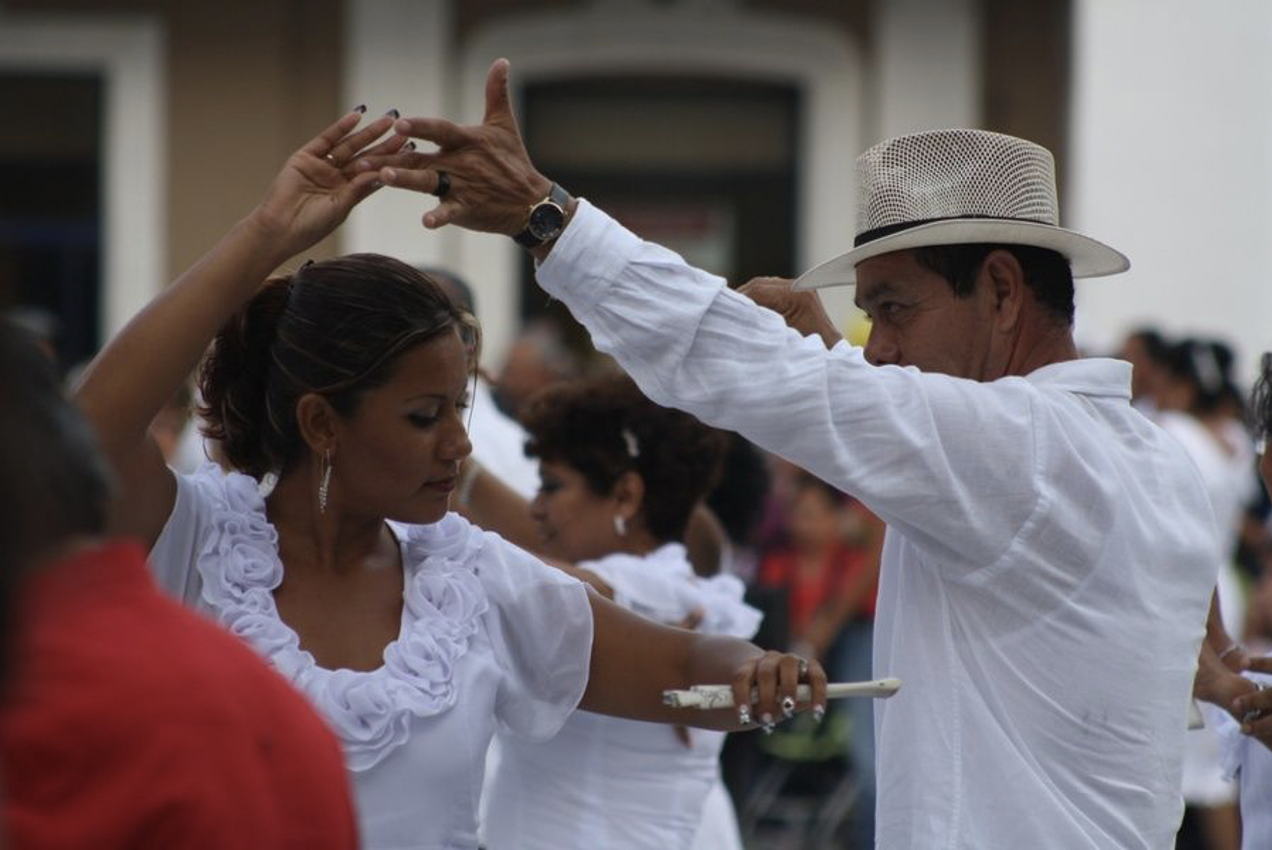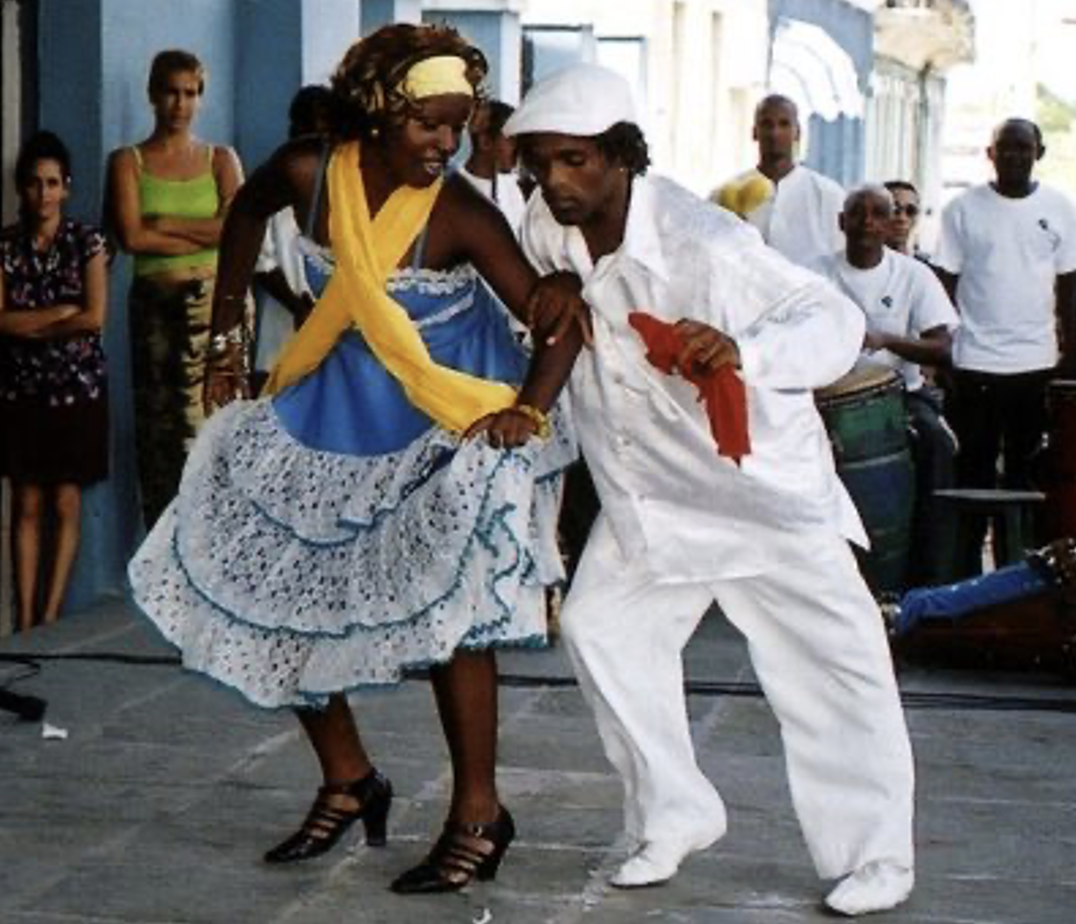“With our music, we Cubans have exported more dreams and pleasure than with our tobacco, more sweetness and energy than with all our sugar." - Fernando Ortiz
How Latin American Dancing Began
As early as the days of Louis XIV and the birth of ballet in the French Royal court, Dance has been a physical display of our emotional states, a form of conversation, and a celebration of music. Our beloved form of art, ballroom dancing, has two very distinct branches that have rather different origins—the Latin American branch and the Standard branch. The latter has evolved from ballet, taking some of the strict rules of etiquette exercised in the early days in the royal courts of Europe such as attire, and strict rules governing how to take someone’s hand, how to bow, or how to keep your feet in a position. In a way, that style of dance was “manufactured.” The Latin-American style of ballroom dancing, however, has quite different roots. Its dances reflect life and music, with a human factor involved—an interaction between two souls under the tunes of the clave, a family gathering, or a celebration of sort, they capture, like a photo, a moment in time with all its emotion and excitement.
Often, all consumed with achieving and winning, competitive dancing loses its connection to the roots of the dance form, and the sense of being present with yourself, the partner, the music, and the floor vanishes. The worshipers of true Latin-American dancing, the Cubans and the Africans, are unbothered with fancy costuming and how many spins they can do in a bar of music, but very much moved and kept alive by the spark a simple handhold or a foot pressure can ignite.
“Without doubt the most fascinating rhythms in the world come from the Latin-American countries and the vast majority of these rhythms have their roots in Africa. Many colorful and exotic dances have been developed to interpret the exciting and compelling music which is based on these rhythms. In the Western World five of these dances have been standardized for teaching to the general public, amateur medal tests, professional examinations and competitions, namely the Rumba, Samba, Paso Doble, Cha Cha Cha and Jive." - Walter Laird

Authenticity
In the modern version of Latin American dancing we have standardized a technique that reflects the values and behaviors of our Western cultures. In a way, it has become far removed from its original sources and motivations. Dance to impress or dance to express? It became a style in itself, a style with a lot of improvements, new ideas, and tuned to reflect the abilities of today’s generations. Going back to the roots and understanding where it all started, however, can bring a new sensation, color, and enrichment to a dancer’s values, attitude, and understanding towards dance as a whole.
Authentic Cuban and African Features of Latin American Dances
- Being Grounded- Worshipping African deities through dance rituals is how Cuban dancers connected with Mother Nature and Mother Earth. In reaction to the sounds of wind and percussive instruments, a dancer, through activation of the feet, legs, and hips, emulates a strong connection to the ground.
- Foot Articulation- In Brazil, it is believed that a good “sambista” ( a Samba Dancer) can speak with their feet because of their articulate, caressing movements sometimes fast, sometimes slow but always meaningful and full of connection to the floor. The dancers of authentic Cuban Rumba use their feet with unique precision. Sometimes their movements can create the illusion of levitation and gliding. They usually dance barefoot and their movement is heavily based on reaction to the percussive beat of the music.
- Hip Movements- Seemingly magical and communicative, the hip movement can be quite a fascinating feature of the Latin American dances that draws attention to itself. Some African dances portray facts of life, like an expression of lovemaking relationship in Rumba Guaguanco with freedom and naturalness. The hip movements carry narrative value.
- Cuban Timing- African music, unlike western music, evokes and encourages a lot more improvisation, syncopation, and conversation between the dancers and the music. It doesn’t always follow the “correct” musical structure. For example, in any piece of music written in 4/4 time signature, the first beat would be the strongest, the organizational unit, which would make us believe that we should start dancing on that beat, but in Cuban dances like Danzon and Son, we start dancing on the 2nd or the 4th beat, thus dancing against the rhythmical pattern. This is called Contratiempo cubano timing.
- Polyrhythmic activity- a distinctive feature of African music that has a big influence on Latin American dancing is polyrhythm. It occurs when several rhythmical patterns are being played by the musicians at the same time, simultaneously to create a cohesive and rich unit of music. In Latin, we utilize it with our step, movement, or body rhythm pattern. For example, it can be done as a play between partners, each partner dances to a specific rhythmic pattern challenging the other partner to answer with a different rhythmic pattern in the music.
- Cuban Motion- the Cuban motion is a specific hip movement in a circular, infinity sign-like pattern produced through controlled weight transfer and foot articulation connected to the percussive accents in Latin American music.
- The Touch- Ballroom dancing, unlikely ballet, tap, or jazz is in its entirety is reliant on partner interaction. In its simplest form, the dance hold serves as an embrace. A welcoming touch that provokes warm feelings of sharing a journey- minimalistic, powerful, and sensual. In dances like the Danzon and Son, the hold between the partners serves as a conduit for communication of emotions, feeling, desires, and sharing of body weight.
- Playfulness- The authentic Cuban Rumba in particular has a heavy emphasis on the concept of a sensual, playful relationship between the two partners creating a movement dialogue. A captivating eye contact along with carefully curated hip movements provoke each partner to react and express their desires for each other in a beautiful gracious way. In dances like the Cha Cha or the Mambo, the inner child of a dancer is awakened and allowed to roam free and play. By being totally present at the moment, each partner can react to the provocation of the other and engage in a game of cat and mouse.
- Dynamic and energetic changes- The Cuban Rumba, Danzon, and Son are dances that are difficult to predict, because of their colors and shades created by energetic changes. These dynamic changes from a slow, prolonged, articulated, sensual movement to a brisk and powerful accent can create unpredictability in the movement pattern which stimulates the dancer and audience to always be “on the watch” for what is next. Much like in a conversation or debate, the use of specific vocabulary and the voice patterns and articulation can put an emphasis or hide something keeping the interaction “alive”.
- Body Designs- through provocative, yet naive gestures and strong but light body shapes, a dancer can create a unique language through which he can communicate desires for intimacy and play to one’s partner.
- Instinct and Spontaneity- just like hunting a gazelle in the African Savannah, dance should resemble a spontaneous reaction to outside or internal stimuli. Believing intuitively in what feels right at the moment, without consciously analyzing the outcome, can create an instinctive playful response and interaction between the two partners.
 Authentic Phrases Describing the Essence of the Latin American Dances:
Authentic Phrases Describing the Essence of the Latin American Dances:
- Total presence in the moment
- Vital dance holds
- Feel / sense/ response
- Communicate and sing with the music
- Engage in body conversation
- Allowing the movement to happen
- Inward presence
- Enjoying the feeling of movement
- A feeling of being grounded
- A consistent flow of movement and ongoing conversation with the partner
- Articulation through the feet
- Togetherness and sensuality between the partners

"Music with a strong accent on the last beat of the bar has generated relatively static dances with a minimum of progression in which individual parts of the body are used to interpret the rhythm - such as the dances from Cuba and Brazil. With the exception of the Paso Doble, the music used for the Latin-American dances is based on subtle, exotic rhythms produced by percussion instruments and has its roots in Africa.” - Walter Laird
Our roots, the very reason we are who we are, and what we do, are something to cherish, remember, and try to come back to every day. Sometimes, it is easy to forget, but vital not too. The rhythmic pulses, sensual holds, and hip playfulness of true Latin American dancing is a captivating and compelling reason to move, connect and be present on the dance floor. Staying true to the origins of Latin American music and movement is not a choice that we have to make, but an obligation to celebrate the original dance form and preserve the feeling of being in the moment with another human being.
Sources:
- The Laird Technique of Latin- American Dancing by Walter Laird
- Back to the Roots- The Authentic Cuban Footprint in Latin- American Dancing - Barbara Nagode Ambroz
- Latin- Thinking, Sensing, and Doing in Latin American Dancing by Ruud Vermey
Discover more dancing with Dance Vision


